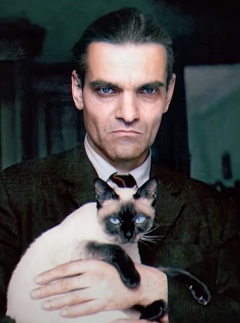
Yuri Knorozov (1922-1999)
On November 19, 1922, Soviet linguist epigrapher and ethnographer Yuri Knorozov was born. Knorozov is particularly renowned for the pivotal role his research played in the decipherment of the Maya script, the writing system used by the pre-Columbian Maya civilization of Mesoamerica.
“There are no indecipherable writings, any writing system produced by man can be read by man.”
— Yuri Knozorov, Epigraphic Atlas of Petén Phase 1
Youth and Education
Yuri Knorozov was born in a village near Kharkiv in Ukraine, at that time the capital of the newly formed Ukrainian Socialist Soviet Republic, into a family of Russian intellectuals. At school, it soon became clear that Yuri was academically bright with an inquisitive temperament; he was an accomplished violinist, wrote romantic poetry and could draw with accuracy and attention to detail. In 1940 at the age of 17, Knorozov left Kharkiv for Moscow where he commenced undergraduate studies in the newly created Department of Ethnology at Moscow State University’s faculty of History. He initially specialized in Egyptology.
World War 2 and Research in Egyptology
The outbreak of World War II hostilities along the Eastern Front in mid-1941 interrupted Knorozov’s university studies. From 1943 to 1945 he served his term in the Soviet Union’s Great Patriotic War in the Red Army as an artillery spotter. At the closing stages of the war in May 1945, Knorozov and his unit supported the push of the Red Army vanguard into Berlin. It was here, sometime in the aftermath of the Battle of Berlin, that Knorozov is supposed to have by chance retrieved a book which would spark his later interest in and association with deciphering the Maya script. In their retelling, the details of this episode have acquired a somewhat folkloric quality. The anecdote tells, when stationed in Berlin, Knorozov came across the National Library while it was ablaze. Somehow Knorozov managed to retrieve from the burning library a book, which remarkably enough turned out to be a rare edition containing reproductions of the three Maya codices which were then known — the Dresden, Madrid and Paris codices. Knorozov is said to have taken this book back with him to Moscow at the end of the war, where its examination would form the basis for his later pioneering research into the Maya script. However, Yuri Knorozov later provided a different version of the anecdote, by which there wasn’t any fire at all and the books were already prepared for shipment to Moscow. However, there has been evidence that Knorozov hasn’t even been in Berlin according to his military records, which state that his military unit by the tie was located near Moscow.
In the autumn of 1945 after the war, Knorozov returned to Moscow State University to complete his undergraduate courses at the department of Ethnography. He resumed his research into Egyptology, and also undertook comparative cultural studies in other fields such as Sinology. He displayed a particular interest and aptitude for the study of ancient languages and writing systems, especially hieroglyphs, and he also read in medieval Japanese and Arabic literature.
The De Landa Alphabet
In 1947, Knorozov wrote his dissertation on the “de Landa alphabet“, a record produced by the 16th century Spanish Bishop Diego de Landa in which he claimed to have transliterated the Spanish alphabet into corresponding Maya hieroglyphs, based on input from Maya informants. De Landa, who during his posting to Yucatán had overseen the destruction of all the codices from the Maya civilization he could find, reproduced his alphabet in “Relación de las Cosas de Yucatán” intended to justify his actions once he had been placed on trial when recalled to Spain. The original document had disappeared, and this work was unknown until 1862 when an abridged copy was discovered in the archives of the Spanish Royal Academy. Since de Landa’s “alphabet” seemed to be contradictory and unclear previous attempts to use this as a key for deciphering the Maya writing system had not been successful.
Deciphering Mayan Hieroglyphs
At first glance, Maya hieroglyphs seem like a baroque form of picture writing. The Maya used a script of animal heads, body parts, gods, and many other completely mysterious images, all arranged into blocks to make a text. The common wisdom for many decades held that the glyphs were nothing more than a cumbersome pictographic system in which each image represented a specific word or idea.[2]
In 1952 Knorozov published a paper which was later to prove to be a seminal work in the field. Knorozov’s key insight was to treat the Maya glyphs represented in de Landa’s alphabet not as an alphabet, but rather as a syllabary. He was perhaps not the first to propose a syllabic basis for the script, but his arguments and evidence were the most compelling to date. He argued that the Mayan glyphs consist either of logograms (i.e. signs used to represent an entire word) or of phonetic signs. In case of the latter, each glyph represents a consonant-vowel combination. Knorozov went on to correctly posit that a Mayan word made up of a consonant-vowel-consonant combination was written with two glyphs, with the vowel of the second glyph not pronounced. Hence, the glyphs for tzu and lu were pronounced tzul, which was the Mayan word for “dog.” Using this approach, Knorozov was able to decipher a wide array of hitherto incomprehensible Mayan symbols. He published his major work on the subject, Pis’mennost’ Indeitsev Maiia (The Writing of the Maya Indians), in 1963.[1]
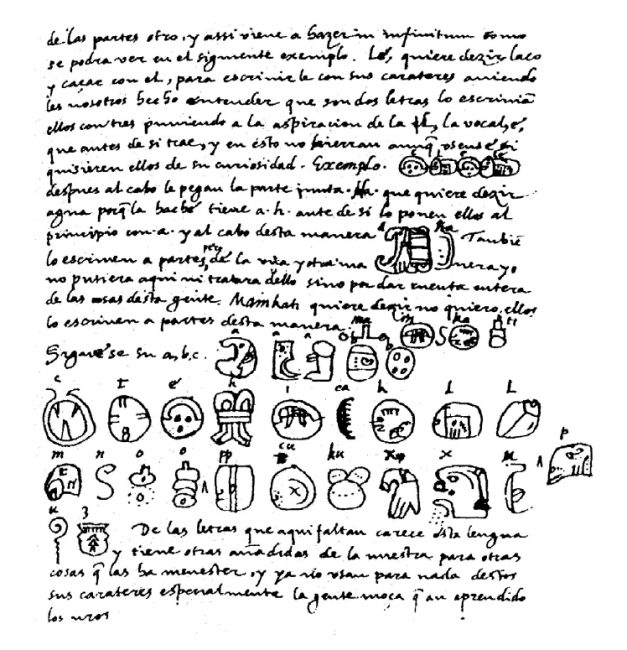
Page from Diego de Landa’s Relación de las Cosas de Yucatán (1853 edition by Brasseur de Bourbourg), containing description of the de Landa alphabet which Knorozov relied upon for his breakthrough.
Upon the publication of this work from a then hardly known scholar, Yuri Knorozov and his thesis came under some severe and at times dismissive criticism. According to the prevailing view among the scientific community, the glyphs were founded on ideographic principles. During the 1960s, other Mayanists and researchers began to expand upon Knorozov’s ideas. Their further field-work and examination of the extant inscriptions began to indicate that actual Maya history was recorded in the stelae inscriptions, and not just calendric and astronomical information. Other early supporters of the phonetic approach championed by Knorozov included Michael D. Coe and David Kelley, and whilst initially they were in a clear minority, more and more supporters came to this view as further evidence and research progressed. A major breakthrough came during the first round table or Mesa Redonda conference at the Maya site of Palenque in 1973, when using the syllabic approach those present (mostly) deciphered what turned out to be a list of former rulers of that particular Maya city-state.
Later Life
Due to Soviet travel restrictions, it was not until 1990 that Knorozov was eventually able to leave Russia again and finally visit the ancient Maya homelands and archaeological sites in Mexico and Guatemala. The government of Mexico awarded him the Orden del Águila Azteca (Order of the Aztec Eagle), the highest decoration awarded by Mexico to non-citizens, in 1994. Knorozov died in Saint Petersburg on March 31, 1999, of pneumonia in the corridors of a city hospital, just before he was due to receive the honorary Proskouriakoff Award from Harvard University. Today, about 80 percent of Maya inscriptions are readable, and the writing system is essentially deciphered.[2]
Alexandre Tokovinine, Lecture 1: Introduction: the context of Maya writing, [5]
References and Further Reading:
- [1] Yury Valentinovich Knorozov, Russian linguist, at Britannica Online
- [2] David Stuart: Decoding the Glyphs Unlocked Secrets of a Mighty Civilization, in Discovering Archaeology, 1999.
- [3] Works by or about Yuri Knorozov in libraries (WorldCat catalog)
- [4] Yuri Knozorov at Wikidata
- [5] Alexandre Tokovinine, Lecture 1: Introduction: the context of Maya writing, Alexandre Tokovinine @ youtube
- [6] Coe, Michael D. (1987). The Maya. Ancient peoples and places series (4th edition (revised) ed.). London and New York: Thames & Hudson.
- [7] Coe, Michael D. (September–October 1991). “A Triumph of Spirit: How Yuri Knorosov Cracked the Maya Hieroglyphic From Far-Off Leningrad” (online reproduction). Archaeology. New York: Archaeological Institute of America. 44 (5): 39–43.
- [8] Coe, Michael D.; Mark van Stone (2005). Reading the Maya Glyphs (2nd ed.). London: Thames & Hudson.
- [9] Grube, Nikolai; Matthew Robb (April–June 2000). “Yuri Valentinovich Knorozov (1922–1999)” (Spanish edition of English-language original, Alfredo Vargas González (trans.)). Actualidades Arqueológicas (in Spanish). México, D.F.: Instituto de Investigaciones Arqueologicas-UNAM. 22.
- [10] Timeline for Yuri Knozorov, via Wikidata

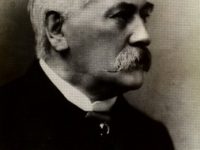

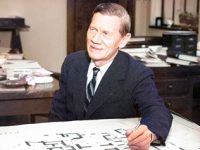
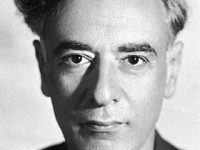

Pingback: Whewell’s Gazette: Year 3, Vol. #14 | Whewell's Ghost